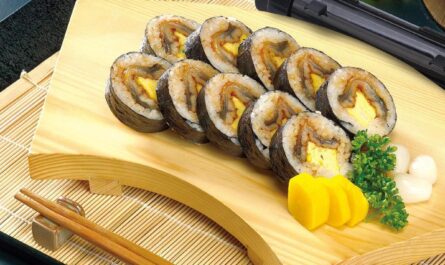Have you ever stumbled upon the deliciously artistic, triangular rice balls called onigiri? If you have, then you probably know that making them is not only fun but also very rewarding. Whether you’re a seasoned sushi lover or simply someone with a penchant for Japanese cuisine, understanding how to make onigiri using molds can add a delightful twist to your culinary adventures.
Using molds to create onigiri can make the process both quicker and more enjoyable, ensuring that your rice balls come out perfectly shaped every time. This method is suitable for beginners and those who appreciate the artistry of homemade food.

The Cultural Significance of Onigiri
Traditional Japanese cooking often involves rice, and among its myriad forms, onigiri holds a special place. These rice balls are not just food; they are symbols of love and care, often packed as a part of bentos (lunchboxes) by parents for their children or partners. In Japan, they are cherished for their simplicity, portability, and ability to surprise, thanks to the hidden fillings.
Onigiri typically appear plain from the outside, but bite into one, and you’ll often find beautifully seasoned fillings, like salted salmon, sour plum (umeboshi), or rich tuna mayo. Learning how to make onigiri using molds allows you to bring this cultural delicacy to life in your kitchen with ease.
Why Use Molds for Onigiri?
For many, the idea of shaping onigiri by hand may seem daunting. Heres where molds come into play. Molds are an excellent tool for several reasons:
- Precision: Molds help in achieving uniform shapes and sizes, ensuring each rice ball looks professional.
- Ease of Use: They cut down on the time and effort required, particularly useful for beginners or those in a hurry.
- Variety: Molds come in an array of shapes such as stars, hearts, and even characters, enabling creativity and fun.
Gathering Your Ingredients
To start making onigiri, you will need the following basic ingredients:
- Japanese Rice: The key to good onigiri is the use of short-grain Japanese rice, cooked to a slightly sticky consistency.
- Fillings: Choose from a range of fillings like tuna mayo, grilled salmon, or umeboshi for that authentic taste.
- Nori Sheets: These are seaweed sheets that you can wrap your rice balls in to add extra flavor and texture.
- Salt: Adding a pinch of salt enhances the flavor of the rice as well as the fillings.
- Onigiri Molds: These tools are essential for this method and can be found in various shapes and designs, often in Asian grocery stores or online.
Preparing Your Rice
Before moving towards molding, preparing the rice correctly is crucial. It’s similar to the process discussed in our guide on mastering the art of using a rice paddle for sushi.
Step-by-Step Guide to Making Onigiri Using Molds
Step 1: Cook the Rice
Start by washing 2 cups of Japanese rice under cold water until the water runs clear. Cook the rice using either a traditional rice cooker or an electric sushi making machine. Allow the rice to sit for about 10 minutes after cooking.
Step 2: Prepare the Fillings
While the rice is cooking, prepare your choice of fillings.
Step 3: Assemble the Onigiri
Once your rice has cooled a bit, moisten your onigiri mold lightly to prevent sticking. Fill the mold halfway with rice, create an indent, and place your filling in the center. Cover with more rice and press the mold to shape.
Step 4: Unmold and Wrap
Carefully release the onigiri from the mold and wrap with nori sheets for added flavor and presentation.
Tips for Perfect Onigiri
- Prevent Sticking: Always moisten your hands and molds with water to prevent rice from sticking.
- Balance the Moisture: Ensure your rice has the right moisture level too dry or too wet rice can affect the texture.
Storage and Serving Suggestions
Onigiri is best eaten fresh, but it can be stored. Wrap them individually in plastic wrap to maintain freshness and store in an air-tight container. Reheat gently before serving.
Pairing Onigiri With Other Dishes
Consider pairing your onigiri with a light miso soup or enjoy it alongside some traditional sushi for a complete Japanese meal experience.

FAQ Section
Can onigiri have different shapes?
Yes, when using molds, onigiri can take on various shapes. The molds come in various designs beyond the traditional triangular form.
Is it necessary to use nori sheets?
No, while nori sheets add traditional flavor and aesthetic, you can enjoy onigiri without them.
How long can onigiri be stored?
For the best taste and texture, onigiri should be eaten within 1-2 days of preparation. Keep them refrigerated if not consumed immediately.
This article contains affiliate links. We may earn a commission at no extra cost to you.




